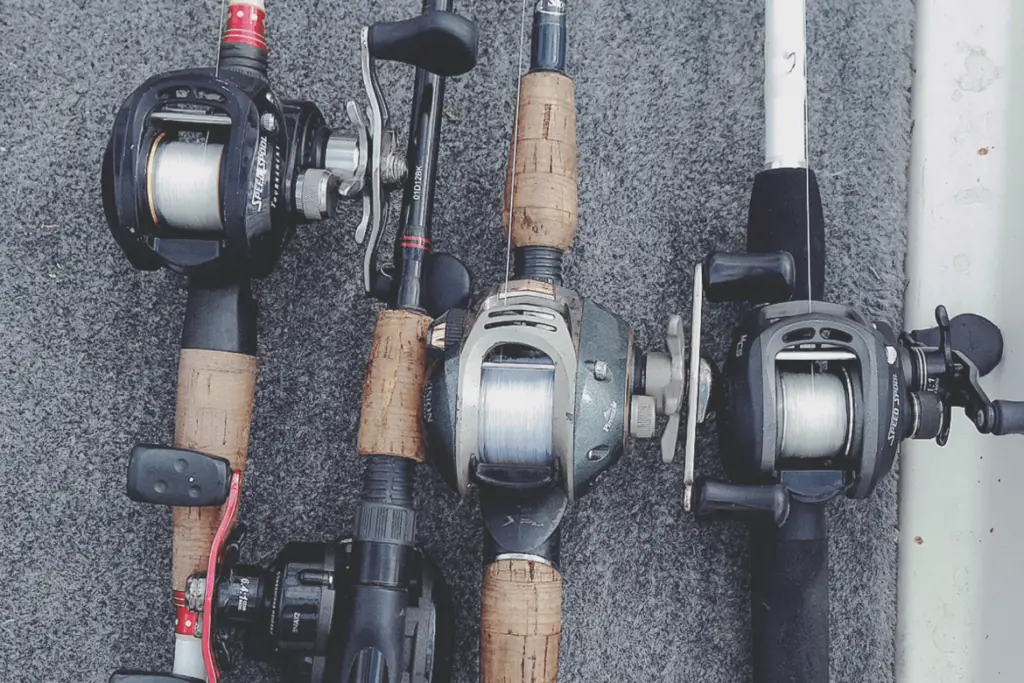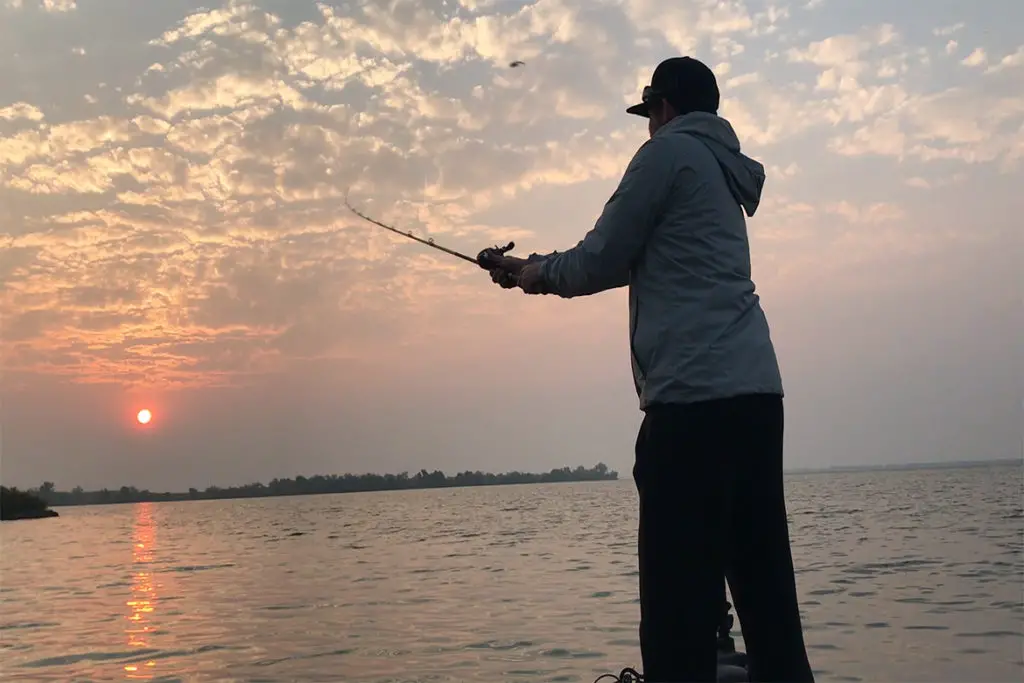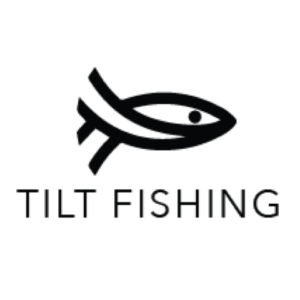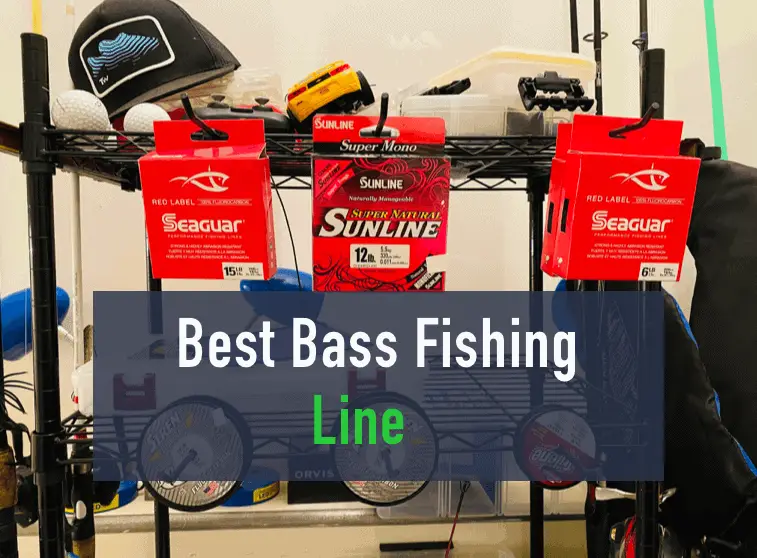Bass, the fish that is amazingly hard to catch at times and almost impossible to do at other times. When you decide to catch bass using your fishing rod, you will find yourself wanting for much stronger fishing line, as these beasts can be both strong and larger than life. Bass will constantly be fighting you as you reel them in, which means you will need to have a fishing line that can easily handle them at their worst.
The best fishing lines for bass fishing will easily handle up to at least 8 pounds of pressure. Larger bass can exert over 20 pounds of force on your line; using either braided, monofilament, or fluorocarbon lines to catch these fish will enable you to comfortably catch them without line breaks.
Having the best line, one that can easily handle any bass that may bite, is not the only thing you need to consider when buying a line. Most people quickly find specific types of lines that they like, with the bait caster or spinning reel you have on your fishing pole playing a large part in which types of lines you will be using.
Look at these top 10 lines for catching bass, and remember that you need the right equipment to catch the best bass!
10 Best Fishing Lines for Bass

When you buy a new line for your fishing pole, you will need to consider that your spinning reel, or baitcaster, will only be able to handle specific sizes. Knowing the thickness of each line and how that affects the whole fishing experience is important. Each line has its nuances and can cause you to only cast a line a few feet far or become entirely incapable of casting in a straight line.
These are the top 10 fishing lines for bass and what you will need to use them effectively!
1. P-Line FloroClear
This line can be used with most standard baicasters and spinning reels as the line is thin even when it has a higher rating. However, because the line does get thick once it reaches 12 pounds or more, if you use a standard baitcaster you will not be able to spool as much onto it.
2. Sunline Super FC Sniper Fluorocarbon
A newer line on the market of fishing lines, the Sunline Super FC Sniper Fluorocarbon is a small invisible line that has already proved itself worthy for the bass fishing world. With a range of lines that go as low as 4 pounds all the way to 30 pounds, they can be used to catch bass of any size and strength. If you are looking for a more bargain-based line that won’t leave you crying if the line break, this is the line to get; with the right pound strength, they will always deliver good bang for the buck.
While standard spinning reels and baitcasters can be used for the line up to 12 pounds, it is recommended that you get larger equipment as the strength goes up because of the thickness increase at stronger ratings. Similarly, you will need high tensile strength fishing poles to handle the pressure applied to them as you catch larger and larger bass.
3. Power Pro Spectra Braided Line Moss Green
This is the first braided line that we have, and it is perfect for catching bass in murkier water, as the braided line would be too visible in clear waters. However, this line offers one especially important thing that fluorocarbon lines do not have, and that is tensile strength. The lowest rated Power Pro Spectra line already reaches 8 pounds of strength, with the top line reaching over 80 pounds of strength.
You won’t need more than 20 pounds to catch bass, so you should be able to use this line on all baitcasters and spinning reels. Because the line is already strong enough at smaller sizes, even standard reels and baitcasters can use them without sacrificing the length of the line or getting easily tangled. However, it should be noted that braided lines can get tangled easier. You should only use these lines on baitcasters when you are already a practiced hand.
4. Seaguar InvizX Fluorocarbon Line
Aimed squarely at the freshwater world, the Seagur InvizX line is virtually invisible once it hits the water. Creating the perfect line to use in even the clearest of water, enticing all bass to attach your bait without worry. Starting at a small and almost thread-like 4 pounds, the line easily reaches strength up to 25 pounds,
While this line is perfect for bass fishing, it’s invisibility, and small size can make it a headache when used incorrectly. We recommend using a baitcaster that can easily be fixed and disassembled next to the fishing hole without parts flying off everywhere. As for a spinning reel, going a bit more basic, with fewer breaks, will allow the line to fly further, but you should be careful; if you throw the line too hard, it can be carried away by the wind.
5. Sufix 832 Advanced Superline Braid
Available in six different colors, the Sufix 832 Advanced superline is meant to catch bass of any size, in any type of water. Having a minimum strength rating of 6 and reaching a maximum of 80, it can be used in all situations that you find yourself fishing in. However, with the price of the line being slightly more than others, it is recommended that you only use this line for special events.
Because of its expense, this line usually does not provide as much length per spool as other lines and will become larger once you reach strength levels above 30 pounds. You can spool this onto a normal baitcaster or spinning spool, but you will have to ensure that the brakes are capable of stopping the momentum that casting this line will cause.
6. Kastking Copolymer Fishing Line
With a soft, smooth feel to the touch, the Kastking copolymer lines are perfect for bass fishing, where you know you need to cast a bit further. These lines go up to 30 pounds and will allow you to throw a line much further than you ever expected. Many of the best locations to cast for bass will require that you throw the line much further than you thought possible.
Using a standard spinning wheel or baitcaster with this line will only stop you from using it to its full potential. If you want to use this line, a baitcaster similar to Shimano Curado DC reel should be used; with a spinning reel, you should look for something the equivalent of the Shimano Stradic FK reel. Both of these can be adjusted to let you easily cast much further with adjustable breaks.
7. Berkley NanoFil Uni-Filament Fishing Line
The name Berkley should be familiar to most fishing lovers, with many people first entering the world of fishing through one of their already existing kits. The NanoFil uni-filament fishing line is perfect for casting lines further away from the shore or your boat. However, the line is usually only available in two strengths, 6 and 12 pounds.
To use this line, most normal baitcasters and spinning reels will work, owing to the line not being particularly thick. Usually coming in a spool of 150 yards, it can be spooled onto most reels with ease and will allow you to catch most smaller bass.
8. Orvis Hydros Warmwater Fly Fishing Line
A stranger entry into the line of fishing lines used to catch bass; the Orvis Hydros Warmwater Fly Fishing line is a much more well-rounded line than some of the other lines on the list. This is a line capable of helping you catch carp, poppers, or bass. This line usually comes in a spool of 90 feet and can handle most sizes of bass you will find in your local lakes.
Owing to this being a fly-fishing line you should preferably not use these on baitcasters as they will become entangled while you are flinging the lines. If you want to use this line it is best to use normal spinning reels where you will have control over the line without having to stress about getting the line tangled in the reel.
9. GEVICONT PE Braided Fishing Line
The best bang for the buck braided line, the Gevicont PE braided line, comes in multiple colors, strengths, and lengths. Starting out at 109 yards in length, this line is favored by fishermen still trying to test new waters or learning how to use braided lines. Further, for the relatively low price, the line goes from as low strength as 6 pounds, all the way to 100 pounds, which is more meant for deep-sea fishing.
Because of the wide range of sizes, strengths, and thickness of this line, you can use them on any reel that you have. Baitcasters work quite well with this line as you can easily spin off the amount of line you need to use; for spinner reels, you can do the same. The low cost of the line means that you can spool it onto several different reels without having to pay an arm or a leg.
10. SpiderWire Stealth Superline Braid Fishing Line
Aimed at more stealthy bass fishing, the SpiderWire Stealth superline is a strong braided line that has a focus on staying hidden in the water. Starting at the low end of 8 pounds and quickly going well over 60 pounds in strength, it easily allows you to reel in bass using a multitude of lures. You usually get enough on a single spool to easily put a line on two or three reels, allowing you to use multiple fishing rods with the same line.
You can use this line on both baitcasting reels and spinner reels that you have, with the line only becoming unusable owing to size onceyour reach stronger strengths.
How to Choose Bass Fishing Line

Choosing which line you will be using can be challenging, owing to many factors changing what you will use; many times, the weather will have a larger impact than anything else. The first thing you will need to know about where you are fishing is the average size of the fish that will be there, with medium-sized bass only requiring lines up to 15 pounds.
As you go to larger rivers and lakes you will need to get stronger lines as the bass can become almost monstrous. The second thing you will have to consider is the color and murkiness of the water; bass can see fishing lines if they become large and will avoid your bait if the water is too clear. Choosing a line that disappears in the water is vital to catch your bass. However, the weather can change the water color drastically.
The last thing you need to consider is the weather conditions at the lake, river, or dam you are fishing at, as this will decide which fish are out. The murkiness of the water can also be affected by rain, winds, or just nice bright sunlight. You will need to consider these three factors when choosing what line you will be using for fishing each day.
Types of Fishing Line for Bass
There are three types that all fishing lines for bass will be broken into, each one providing different advantages for different conditions. Every line can be used to catch bass in many different conditions, with some of the best lines never having to be switched out for each new location; however, these usually cost a lot more.
- Fluorocarbon: One of the most versatile fishing lines you will find. This is remarkably similar to Monofilament fishing lines; however, it can be a lot stronger at smaller sizes than the straight plastic lines. Easily disappearing into nothingness, these lines can be a bit more expensive than even braided lines when you start fishing. However, their advantage when fishing seriously cannot be understated.
- Monofilament: The most common fishing line in the world, this is an almost plastic-like line that comes standard with all new fishing rods. This line can be quite weak but should be able to hold its own once you buy the right strength. What makes this type of line so special is its ability to easily disappear in the water, being almost impossible to see even by human eyes.
- Braid: Braid lines are easily the kings of strength and are most commonly used by enthusiast fishermen. Able to fully and functionally catch most fish, including bass, without even noticing, these lines are loved for their complete strength and versatility.
Best fishing line for bass baitcaster
Baitcasters are some of the most loved reels to be used on most fish, as they allow for slightly more control in short distances. This has meant that only specific types of lines have been used on them, with many fishermen quickly finding their favorite type of line to be used on their rods.
The best fishing line for bass baitcasters is braided lines. These fish usually like murky waters but can easily reach large, monstrous sizes. Braided lines can handle the weight and strength of these monsters much easier, without having to sacrifice a line or losing bait when snagged.
However, if you choose to catch fish in clearer waters or in rivers, you should consider using high strength Fluorocarbon lines instead. It may be a bit trickier to stop the line from birds nesting, but the invisibility of the line will allow you to easily snag several larger bass.
Best fishing line for bass spinning reel
The best line for bass spinning reels can be hard to decide on, as spinning reels usually allow you to cast further away from your boat or the shore. Spinning reels can have braided lines, but when you are bass fishing with them, you will usually be going after much larger bass.
The best line for spinning reels is Fluorocarbon lines that have higher tensile strength, which will allow you to comfortably catch and deceive some of the larger bass you can find in lakes. The best thing about fluorocarbon is that the line will be invisible to most, if not all, the fish you may be looking to catch on a trip.
However, you can still use braided lines if you are looking to catch fish in saltwater or you are trying to go for more than just bass in a specific location. The longer casting range will allow you to easily use quite different techniques and baits to test the waters with your braided lines.
What color line is best for bass fishing?
As with all fish, there are specific colors of lines that will work better than the rest. Choosing the best one for bass fishing can be a challenge if you are not aware of the environment the fish will be in. Most bass will be in murkier and muddy water, where it can be a challenge to see even the basic movement of giant fish in the water.
The best color for your line is a shade of green when going for bass fishing. This will allow the line to blend into the water easily. Having a line that is harder to see will be beneficial for bass fishing as the fish can easily be spooked away when they see that a line is standing out like a sore thumb.
If you are unsure about the line you are using, the best thing you can always try is using clear lines. These lines disappear in the water and will allow you to not stress about being seen.
Conclusion
Choosing the best line can be a challenge, with most fishermen quickly finding a favorite for their fishing needs. Many times, the line you are using will be dictated by what you have available instead of what you think will work the best. If you are unsure there is only one real thing you can do, try until you start catching a fish.

